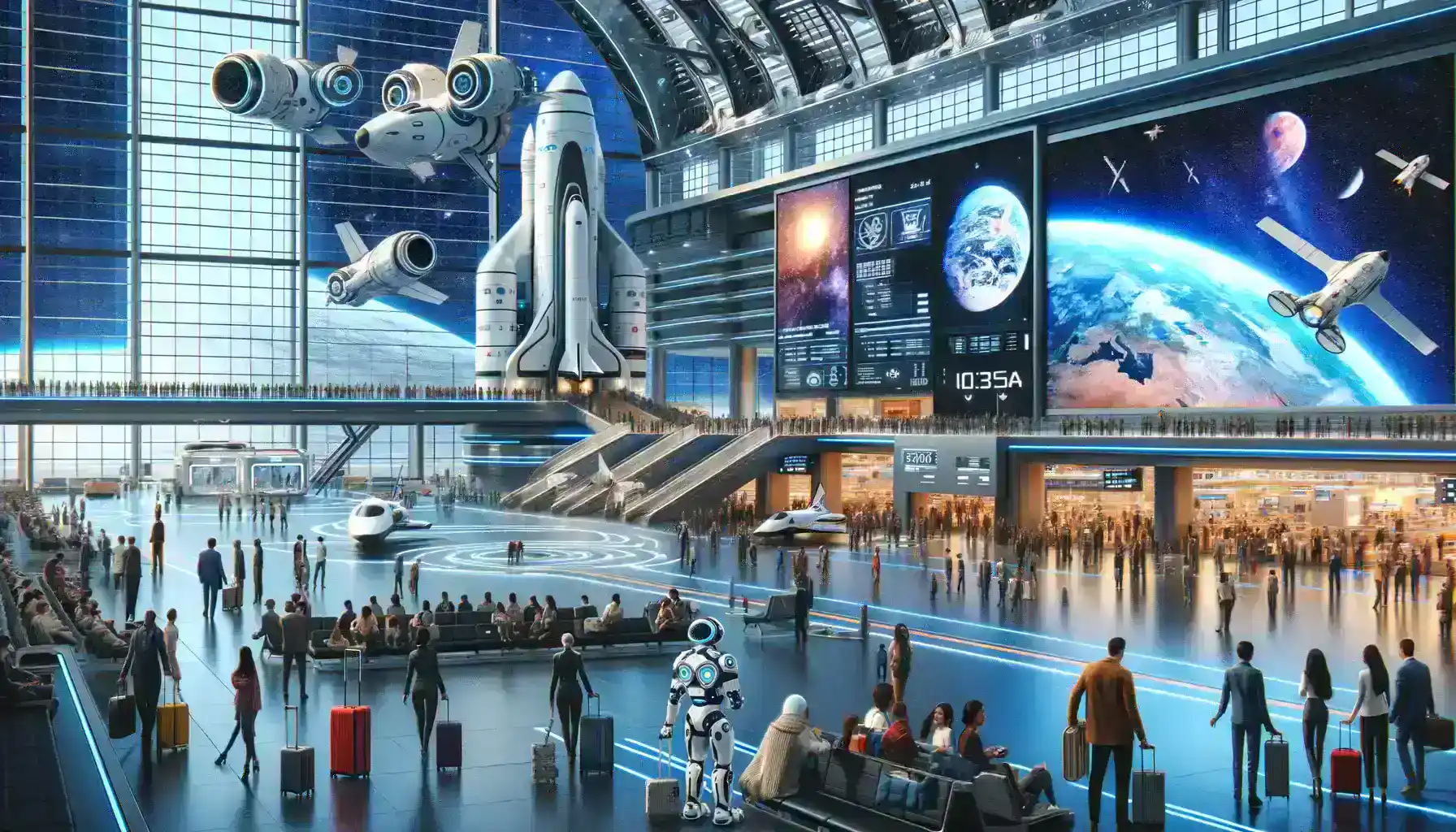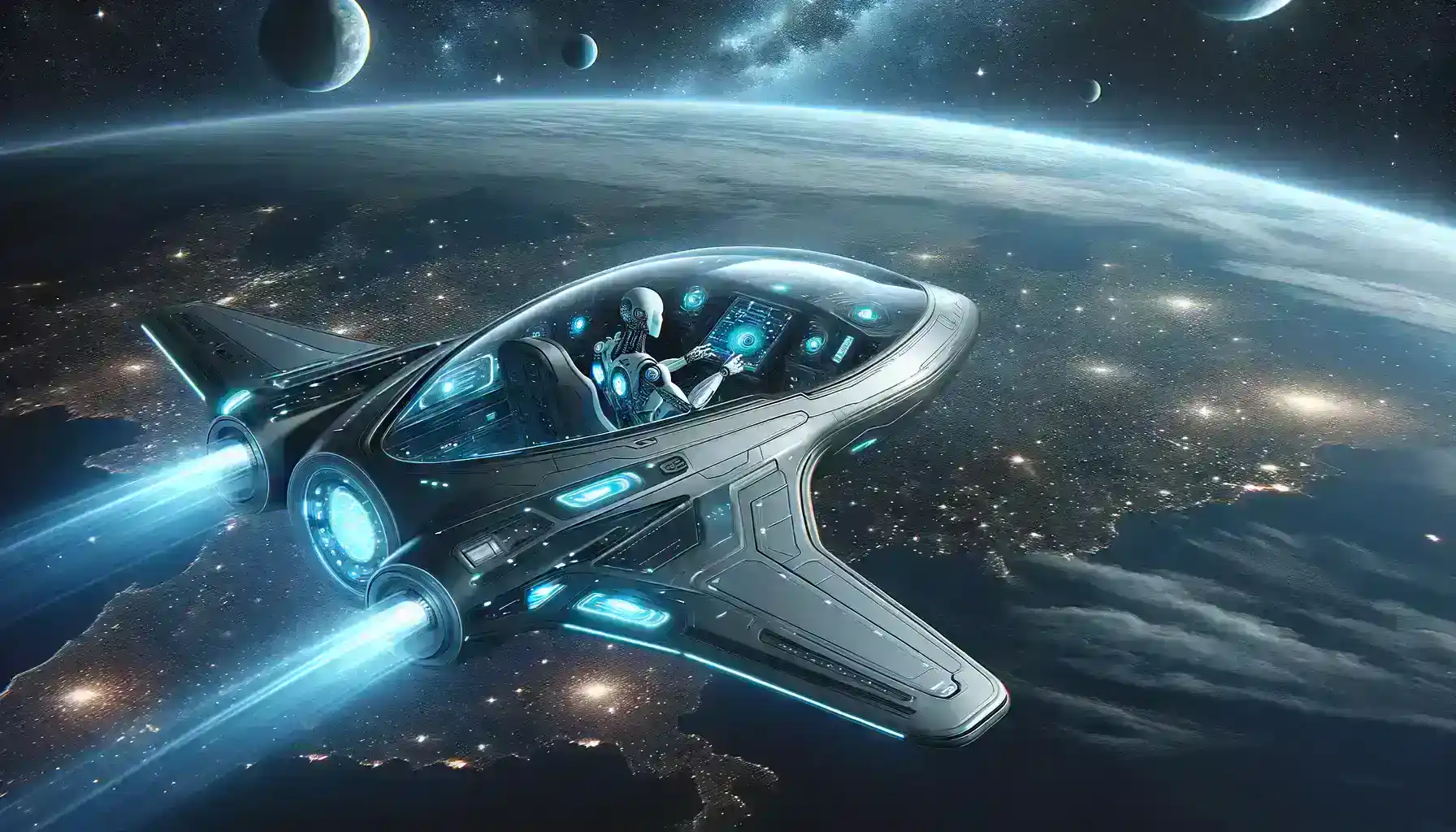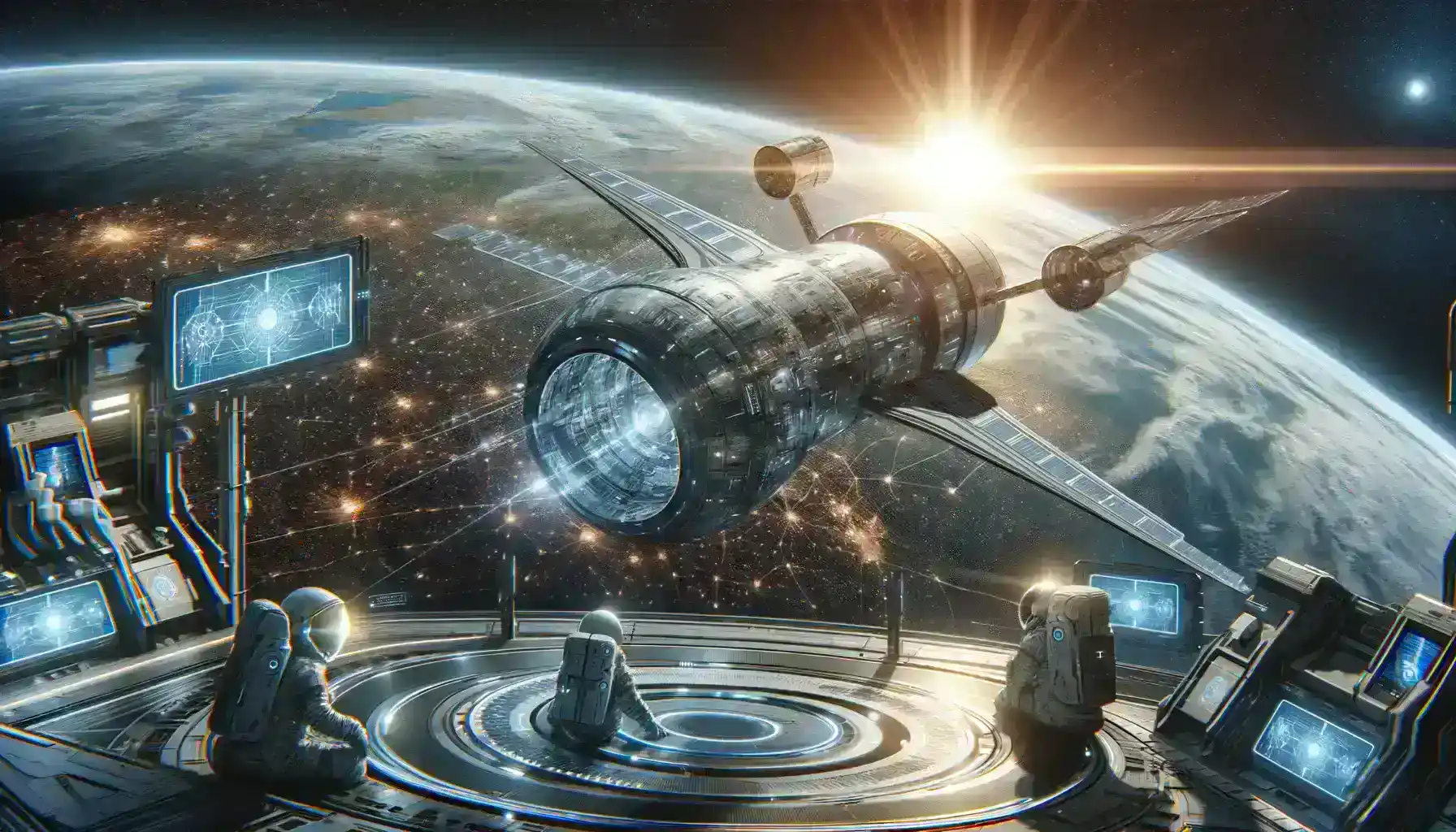Table of Contents
The dream of traveling to space has fascinated humanity for generations. While space exploration was once reserved for astronauts and scientists, a new era is dawning in the 21st century. Commercial space travel, fueled by cutting-edge technologies, is making space accessible to tourists. One of the key drivers behind this revolution is artificial intelligence (AI). In this article, we will explore how AI is transforming the landscape of commercial space travel, from enhancing safety and efficiency to creating immersive commercial space travel experiences for tourists.

The Rise of Commercial Space Travel
Commercial space travel has gained momentum in recent years, the rise of commercial space travel represents a paradigm shift in the aerospace industry. Companies like SpaceX, founded by Elon Musk, have successfully launched and recovered reusable rockets, drastically reducing the cost of accessing space. Virgin Galactic, led by Sir Richard Branson, aims to offer suborbital spaceflights to tourists. Blue Origin, backed by Jeff Bezos, is developing vehicles for both suborbital and orbital missions. These examples illustrate how mercantile ventures are transforming commercial space travel exploration from a government-dominated field into an industry accessible to civilians, heralding a new era of commercial space travel.
1. The Role of AI in Space Tourism
The role of AI in commercial space travel is pivotal for safety, navigation, and enhancing the overall tourist experience. SpaceX’s Crew Dragon spacecraft, which autonomously docks with the International Space Station, showcases AI’s safety contributions.
Safety First
Safety is paramount in commercial space travel, and AI plays a crucial role in ensuring the well-being of space tourists. AI-driven systems continuously monitor spacecraft conditions, detect anomalies, and make real-time adjustments. For example, AI algorithms can detect potential technical issues and suggest corrective actions, reducing the risk of accidents. AI’s contribution to space travel safety is exemplified by SpaceX’s Crew Dragon spacecraft. With AI systems on board, Crew Dragon can autonomously dock with the International Space Station, reducing the need for constant human intervention. This capability ensures the safety of both astronauts and space tourists.
Navigation and Guidance
Navigating the complexities of space requires precision and accuracy. AI-powered navigation systems use data from various sensors and satellites to calculate trajectories, plan routes, and make in-flight adjustments. This technology ensures that spacecraft reach their intended destinations with utmost precision.
Personalized Experiences
AI goes beyond safety; it also enhances the overall experience for space tourists. AI-driven personalization allows for tailored experiences based on individual preferences. Whether it’s adjusting cabin conditions, offering customized in-space activities, or providing curated space cuisine, AI ensures that each tourist’s journey is unique and memorable.
2. AI-Powered Spacecraft
AI-powered spacecraft have become integral to the success of commercial space travel, ushering in a new era of safety, efficiency, and reliability. Two key aspects of these spacecraft are autonomous systems and predictive maintenance, both of which significantly enhance the commercial space travel experience.

Autonomous Systems
One prime example of autonomous systems in commercial space travel is SpaceX’s Crew Dragon spacecraft. Crew Dragon boasts the ability to autonomously dock with the International Space Station (ISS). This feat is accomplished without constant human intervention, making it a groundbreaking achievement. During its approach to the ISS, Crew Dragon relies on AI algorithms and sensors to assess its position and adjust its trajectory accordingly. This level of autonomy reduces the workload on astronauts and enhances overall safety. In the event of an emergency, the spacecraft’s autonomous response capabilities can ensure swift and calculated actions, mitigating potential risks.
Predictive Maintenance
AI-driven predictive maintenance has revolutionized space travel by proactively identifying potential issues before they escalate. Machine learning algorithms analyze data from various sensors and equipment on board spacecraft. These algorithms can predict when specific components might fail based on historical data and real-time readings. For instance, if a critical system such as the life support system shows signs of deterioration, the AI can alert the crew or ground control well in advance. This proactive approach prevents in-space breakdowns, ensuring the smooth operation of the spacecraft and the safety of space tourists.
3. Challenges and Considerations
While AI holds immense promise for space tourism, several challenges and considerations must be addressed:
Ethical AI
Challenge: Ensuring the use of ethical AI in space travel is paramount. AI systems must treat all space tourists fairly, respect their rights, and protect their privacy.
Consideration: Algorithms used in space tourism must be designed with ethical principles in mind. Transparency and fairness are crucial. For example, AI-driven ticket allocation systems should be free from bias and discrimination.
Airbnb, a hospitality platform, uses AI to recommend accommodations. To ensure fairness, they have implemented guidelines and auditing processes to prevent discrimination in recommendations and bookings.
Training and Expertise
Challenge: Space crews and ground personnel must receive comprehensive training in operating and maintaining AI systems. AI is a powerful tool, but its effectiveness depends on human expertise.
Consideration: Training programs should be developed to equip space personnel with the skills and knowledge required to handle AI systems effectively. NASA’s AI4Mars project provides online courses to educate engineers on using AI for Mars exploration.
Tesla, an electric vehicle manufacturer, offers extensive training to its Autopilot operators and service technicians to ensure the safe and efficient use of AI-based driving assistance systems.
Data Security
Challenge: Protecting sensitive data related to space tourists and spacecraft operations is a top priority. Robust cybersecurity measures are necessary to safeguard against potential threats.
Consideration: Implementing strong encryption, access controls, and intrusion detection systems is essential to protect data. Regular security audits and updates should be conducted. SpaceX, for instance, employs cybersecurity experts to secure its mission-critical data.
The financial industry uses AI for fraud detection. Banks and credit card companies employ robust cybersecurity measures to protect customer data from unauthorized access.
4. The Future of Space Tourism

The future of space tourism is filled with exciting possibilities.
Space Habitats: AI-Driven Sustainability
One of the most exciting prospects in space tourism is the development of sustainable space habitats. AI plays a crucial role in ensuring the viability and sustainability of these habitats. For example, NASA’s “BioNutrients” project uses AI to optimize plant growth in space, which could lead to self-sustaining ecosystems on other celestial bodies. These habitats could serve as bases for longer-duration space tourism and even human colonization of places like Mars. The use of AI in managing resources, recycling, and maintaining life support systems will be critical for the success of these habitats.
Extended Space Tours: AI-Powered Exploration
As AI technology continues to evolve, space tours could extend far beyond suborbital flights. Longer journeys to celestial destinations like the Moon, Mars, and even asteroids become viable with AI-powered spacecraft and systems. For example, SpaceX’s Starship, an AI-driven spacecraft, is envisioned to carry passengers on missions to Mars and beyond. These extended tours would allow space tourists to explore and experience the unique environments of other celestial bodies, offering once-in-a-lifetime adventures.
5. Expanding Accessibility: AI-Enabled Affordability
AI’s role in space travel isn’t limited to advanced technology; it also contributes to making space tourism more accessible and affordable. Innovations in propulsion, manufacturing, and logistics driven by AI could significantly reduce the cost of space tourism. For instance, advancements in reusable rocket technology, pioneered by companies like SpaceX, have the potential to lower launch costs dramatically. Additionally, AI-driven supply chain optimization can streamline the production and delivery of spacecraft components, further reducing expenses. These cost reductions will democratize space tourism, allowing a broader audience to fulfill their dreams of venturing into space.
Conclusion
The integration of AI into commercial space travel is revolutionizing the industry. It enhances safety, enables autonomous operations, and creates personalized experiences for space tourists. As technology continues to advance, the dream of space tourism becomes more attainable. The 21st century holds the promise of a new era in human exploration, where the boundaries of our world extend far beyond Earth’s atmosphere. With AI as our co-pilot, space tourism is not just a dream; it’s a reality waiting to be experienced. The journey to the cosmos has never been more exciting, and AI is leading the way.
As technology continues to advance, the dream of space tourism becomes increasingly attainable. The 21st century heralds a new era in human exploration, where the boundaries of our world extend far beyond Earth’s atmosphere. AI is not just a co-pilot but a guiding force, leading the way in making space tourism a reality.
The journey to the cosmos has never been more exciting, and AI is at the forefront, propelling us toward a future where commercial space travel is not just a dream but a tangible and exhilarating reality. As we look to the stars, we find that AI is not only assisting us in reaching new heights but also redefining what is possible in the world of space exploration.